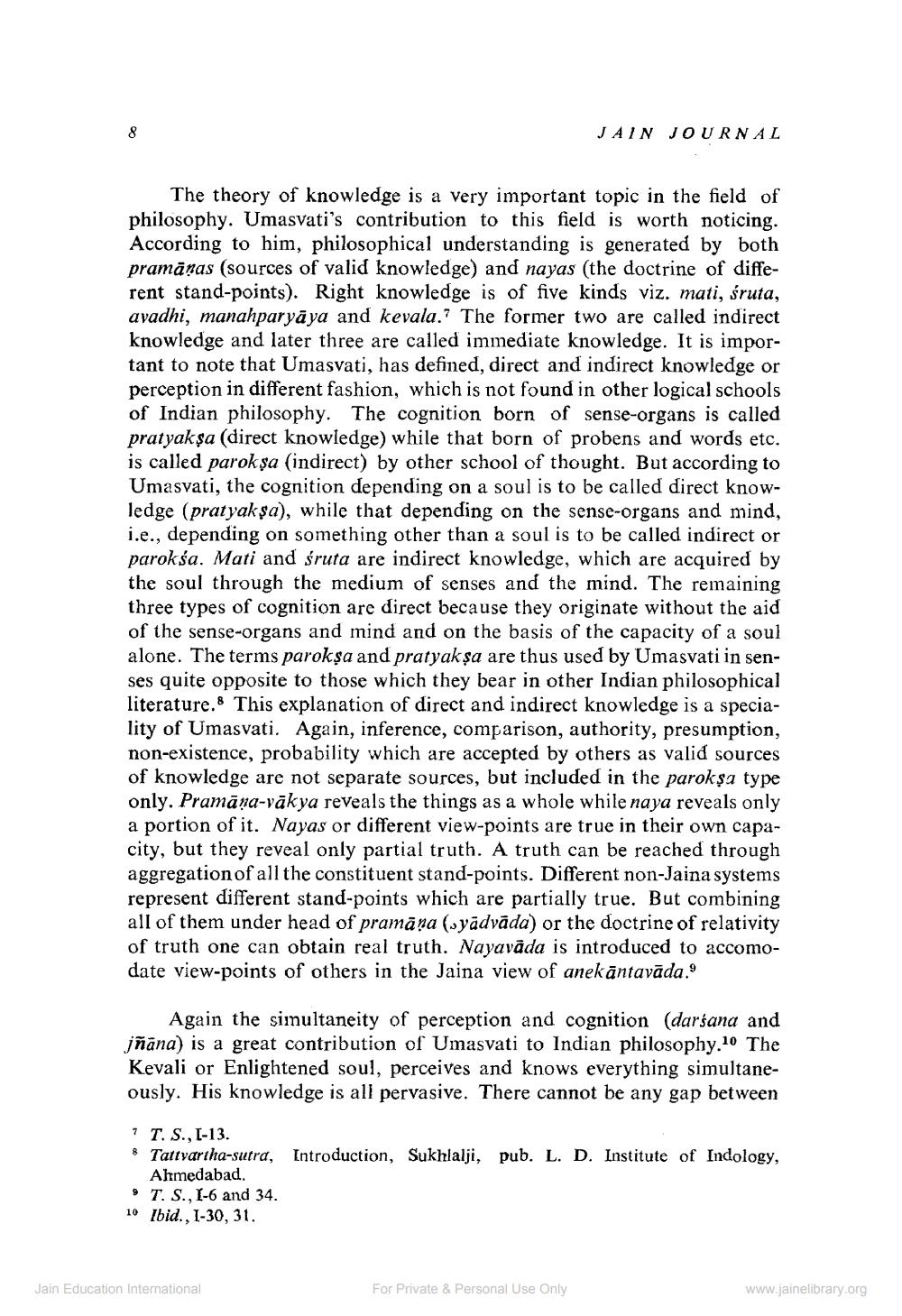________________
8
The theory of knowledge is a very important topic in the field of philosophy. Umasvati's contribution to this field is worth noticing. According to him, philosophical understanding is generated by both pramānas (sources of valid knowledge) and nayas (the doctrine of different stand-points). Right knowledge is of five kinds viz. mati, śruta, avadhi, manahparyāya and kevala. The former two are called indirect knowledge and later three are called immediate knowledge. It is important to note that Umasvati, has defined, direct and indirect knowledge or perception in different fashion, which is not found in other logical schools of Indian philosophy. The cognition born of sense-organs is called pratyakşa (direct knowledge) while that born of probens and words etc. is called parokşa (indirect) by other school of thought. But according to Umasvati, the cognition depending on a soul is to be called direct knowledge (pratyaksa), while that depending on the sense-organs and mind, i.e., depending on something other than a soul is to be called indirect or paroksa. Mati and śruta are indirect knowledge, which are acquired by the soul through the medium of senses and the mind. The remaining three types of cognition are direct because they originate without the aid of the sense-organs and mind and on the basis of the capacity of a soul alone. The terms paroksa and pratyakṣa are thus used by Umasvati in senses quite opposite to those which they bear in other Indian philosophical literature. This explanation of direct and indirect knowledge is a speciality of Umasvati. Again, inference, comparison, authority, presumption, non-existence, probability which are accepted by others as valid sources of knowledge are not separate sources, but included in the paroksa type only. Pramāṇa-vākya reveals the things as a whole while naya reveals only a portion of it. Nayas or different view-points are true in their own capacity, but they reveal only partial truth. A truth can be reached through aggregation of all the constituent stand-points. Different non-Jaina systems represent different stand-points which are partially true. But combining all of them under head of pramāna (syādvāda) or the doctrine of relativity of truth one can obtain real truth. Nayavāda is introduced to accomodate view-points of others in the Jaina view of anekāntavāda.9
Again the simultaneity of perception and cognition (darśana and jñāna) is a great contribution of Umasvati to Indian philosophy.10 The Kevali or Enlightened soul, perceives and knows everything simultaneously. His knowledge is all pervasive. There cannot be any gap between
7 T. S., I-13.
& Tattvartha-sutra, Introduction, Sukhlalji, pub. L. D. Institute of Indology, Ahmedabad.
T. S., I-6 and 34..
JAIN JOURNAL
10 Ibid., 1-30, 31.
Jain Education International
For Private & Personal Use Only
www.jainelibrary.org




